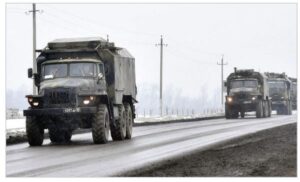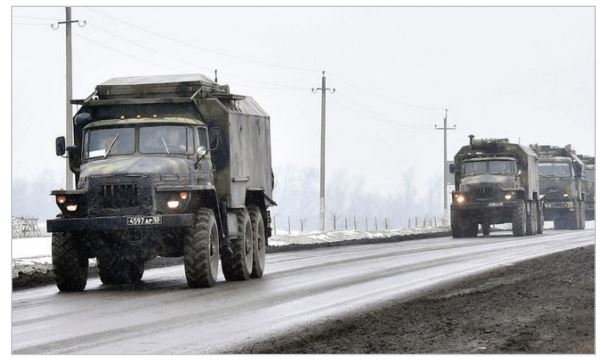Cutting through the haze between Ukraine and Russia

TORONTO – It is remarkable how eerily similar President Biden’s State of the Union Address was to the Canadian House of Commons’ take note debate on Ukraine o February 28. Both were heavy on emotion, condemnation and “rah-rah” for the “underdog”.
Both were short on specifics when it came to concrete actions to support Ukraine militarily and economically. On the first, it should come as little surprise inasmuch as NATO involvement could be seen as a direct provocation by the Russian Federation as well as being “concrete evidence” that Ukraine’s request to enter the NATO Alliance was a direct effort to reduce the buffer between Eastern and Western Europe.
The military/geopolitical issues are in fact much more complex and beyond the scope of this piece. However, a Senior U.S. General acknowledged, in a Bloomberg News interview on February 27, that, as unpleasant as it might sound to sympathizers of Ukraine, any threat that the shooting would expand to full-fledged military operations were highly unlikely – the “West” would jettison that idea, and the support for Ukraine, if that became a likely scenario. The trade offs – risk benefit analysis – would not justify it.
In Canada’s case, aside from the significant and important emotional/political input of the influential Ukrainian Diaspora (including our Deputy Prime Minister, Chrystia Freeland) the economic risks associated with indifference to the cause are relatively small. International Trade department figures place the value of annual bilateral trade at less than $400 million.
Military analysts agree that wars, brief or long, are rarely intended to end only if one or the other side is completely annihilated. The goal is to “get to the diplomatic solution” as quickly as possible without giving everything, or much, away. Therefore, injure if you must; cripple if you need to, but avoid crossing the river of no return, so to speak.
At this point, whether Canadian or American the promises of military support are just that: promises. They are designed to make everyone “feel good” – these are our intentions, in a worst-case scenario. Besides, at the earliest, it would require at a minimum, a month before ay military supplies (including human resources) could get to the theatre of war. Meanwhile, Canadian suppliers, transporters on-site operational infrastructure engineers will eat away at the allocated sums.
One cannot blame the current President of Ukraine for pushing hard to get Western Powers into a more active mode. His bargaining positions weakens with every passing moment. Humanitarian aid is important, but that too requires a collection, delivery, and distribution infrastructure not yet in place. Everything could “get there” when it is too late.
More pressing is the amount of “sacrifice” the population is willing to endure for that commitment. Economic sanctions may stem the flow of some needed financial instruments to the aggressor, in this case Russia. However, the repercussions are immediate to Canadians in the area of petroleum and cereals – oil and wheat.
The price of oil per barrel has shot up to zoom in one week, as has the price of gasoline at the pump. Both are on their way further up. Bread and wheat products are already following suit.
The “facts on the ground”, as an article by Francesco Veronesi in Corriere Canadese today, are highly “structured” and their reliability is suspect. What we do know is that the vocabulary describing Ukrainians and Russians tends to ennoble the first and vilify the latter. Perhaps we are “predisposed” to that, but it does not help us understand the dynamics better.



